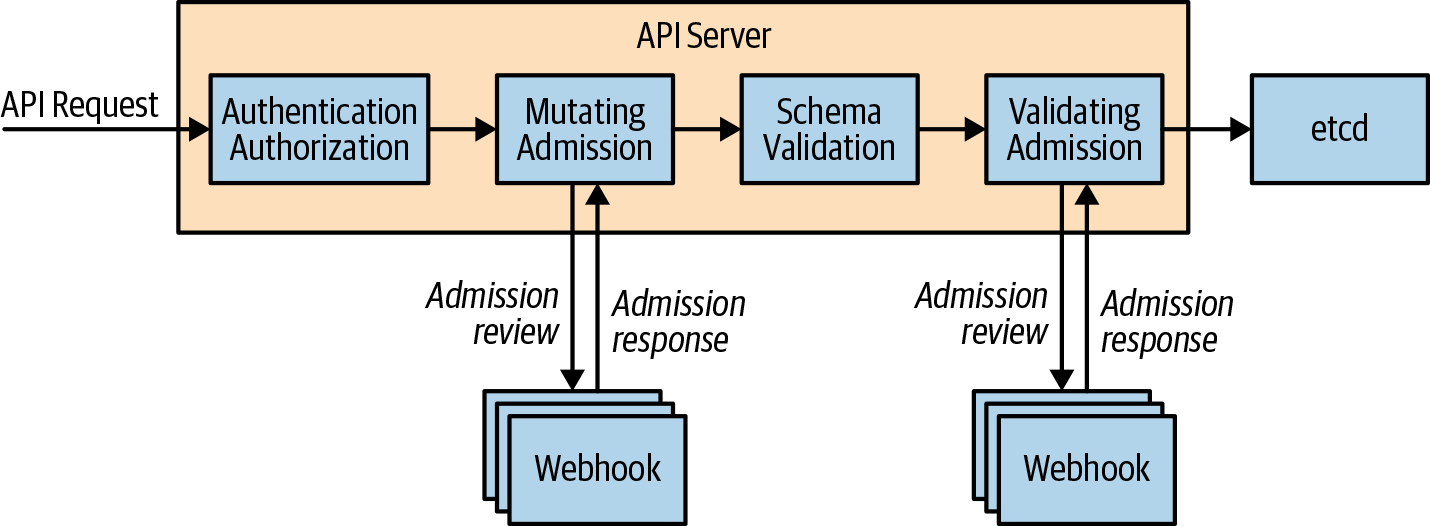Chapter 17. Admission Control and Authorization
Controlling access to the Kubernetes API is key to ensuring that your cluster is not only secured but also can be used as a means to impart policy and governance for all users, workloads, and components of your Kubernetes cluster. In this chapter, we share how you can use admission controllers and authorization modules to enable specific features and how you can customize them to suit your specific needs.
Figure 17-1 provides insight on how and where admission control and authorization take place. It depicts the end-to-end request flow through the Kubernetes API server until the object, if accepted, is saved to storage.

Figure 17-1. An API request flow
Admission Control
Have you ever wondered how namespaces are automatically created when you define a resource in a namespace that doesn’t already exist? Maybe you’ve wondered how a default storage class is selected? These changes are powered by a little-known feature called admission controllers. In this section, we take a look at how you can use admission controllers to implement Kubernetes best practices on the server side on behalf of the user and how we can utilize admission control to govern how a Kubernetes cluster is used.
What Are They?
Admission controllers sit in the path of the Kubernetes API server request flow and receive requests following the authentication and authorization ...